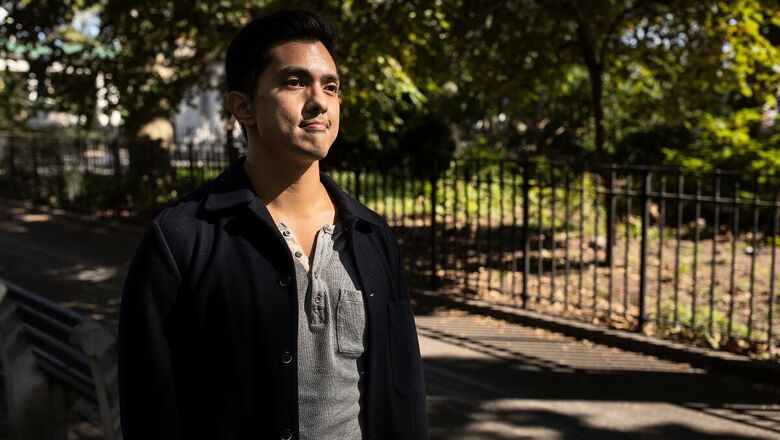
views
Casey Newton recently announced that he was leaving The Verge, the website where he has covered the tech industry since 2013, to write a subscription newsletter hosted by Substack, a 3-year-old platform that is growing in popularity.
Newton is joining the ranks of journalists who have left the relative comfort of an established publication to try their luck at Substack, including culture writer Anne Helen Petersen and political writer Matt Taibbi.
Newton, 40, said in an interview that he would start his newsletter, Platformer, next month. The time was right to go solo, he added, because of the changing relationship between readers and media outlets.
“You might follow a publication,” Newton said, “but it’s more likely you care about an individual reporter or writer or YouTuber or podcaster. People are increasingly willing to pay to support those people.”
Most Substack writers offer a mix of paid and free email newsletters. They make money through subscriptions, not ads. Writers own their newsletters, and the platform takes a 10% cut. Substack also offers a legal defense service to writers of paid newsletters in the United States.
Hamish McKenzie, one of the platform’s founders, said Substack writers could make $100,000 a year if they bring in “a couple thousand people” who spend $5 a month on a subscription. “It’s not easy — it takes time, dedication and care — but it’s more doable than ever,” he wrote in his own Substack newsletter.
The platform appeals to some journalists partly because the news media business has been in steady decline. From 2004 to 2019, roughly half of all U.S. newspaper jobs were eliminated, according to a University of North Carolina study, and more than 30,000 journalists in the country have been laid off or furloughed or had their pay reduced during the coronavirus pandemic.
Substackers include former ThinkProgress editor-in-chief Judd Legum, climate reporter Emily Atkin, sports writer Joe Posnanski and Hollywood columnist Richard Rushfield. Two academics — historian Heather Cox Richardson and economist Emily Oster — have two of the platform’s most popular newsletters.
“It’s a lifeboat for people off the wreck of Old Media — or New Media, for that matter,” said Rushfield, whose newsletter, The Ankler, gives an insider’s view of the entertainment industry.
The most popular paid Substack offering is The Dispatch, a conservative newsletter started last year by Steve Hayes, former editor-in-chief of The Weekly Standard, along with Jonah Goldberg, a former editor at National Review, and Toby Stock, a former executive at the American Enterprise Institute. With more than a dozen employees, The Dispatch has nearly 100,000 subscribers, almost 18,000 paid, and is close to pulling in $2 million in first-year revenue, most of it derived from Substack subscriptions, Hayes said.
For all the editorial freedom and entrepreneurial opportunities it offers, Substack exists at a remove from the internet. Journalists who go the subscription route end up writing mainly for their fans, instead of tossing their work online, where it can be praised or torn apart by a wide variety of readers.
That is fine with Andrew Sullivan, who joined Substack in the summer after years at New York magazine, where his contrarian essays led to criticism from its liberal readers and a tense relationship with its editors.
“There’s something wonderful about writing just for readers,” he said. “Because your people are there, you have to be accountable, but it’s a very pure relationship. It reminds me of the wonderful old days of the blogosphere.”
Edith Zimmerman, a former editor of The Hairpin, whose Substack newsletter, Drawing Links, features slice-of-life comics, also noted the similarity between Substack writers and bloggers of yore. “They seemed to be having fun in a way I hadn’t seen in a while,” she said. “People were creating these spaces for themselves to be goofy and a little protected from the turbulence of just throwing yourself at the entire internet.”
Samantha Irby, a humorist whose newsletter recaps the reality-TV court show “Judge Mathis,” had a newsletter on TinyLetter before moving to Substack, where she has over 1,000 paid subscribers. “They make it so a child could do it, and that’s what I need,” she said. (Note: Since March, I have published a free Substack for a movie-watching club.)
Without the backing of an institution and the audience that goes with it, Substackers may find it a challenge to get their reporting calls returned. Newton said that before he decided to make the leap, he checked in with sources at companies he covers — which include Facebook and Google — to make sure they would return his reporting calls after his departure from The Verge, an established institution.
Substack hasn’t worked for everyone. The eight owners of a left-wing newsletter, Discourse Blog, have decided to leave it for a rival platform, Lede, after finding it hard to attract readers through internet searches. They also wanted more detailed data on their readers.
“We’re making money, because we didn’t have startup costs,” said Aleksander Chan, the Discourse Blog publisher. “But if we’re going to grow into a full-fledged publication, we’re going to need a more robust product.”
Substack strives to balance “simplicity and completeness,” chief executive Chris Best said.
With financial backing from Andreessen Horowitz, Y Combinator and other investors, Substack is not the only platform of its kind. Its competitors include the open-source Ghost, TinyLetter and Lede, which combines WordPress, design agency Alley and payments service Pico.
As it matures, Substack has started behaving more like a publisher, offering editing help, health insurance and access to Getty Images photographs to some writers. Petersen, who left BuzzFeed News this summer to focus on Culture Study at Substack, said she would have an editor for longer features. And instead of giving Substack a 10% cut, she accepted upfront money, along with an agreement to take 15% of subscription revenue for one year.
She has roughly 23,000 subscribers, more than 2,000 paid, she said. She wondered aloud if some of Substack’s soloists would eventually join forces, to make it easier on subscribers. “People don’t want to do this a la carte, paying for six subscriptions,” Petersen said.
Best said Substack’s reliance on email — rather than social media or search engines — promoted a one-on-one relationship between writers and readers, something that should be prized at a time of online noise.
“It’s not about getting the most retweets,” Best said. “It’s about convincing people to part with their money because they trust you.”
He added, “People will hate-read things, but they won’t hate-pay things.”
Marc Tracy c.2020 The New York Times Company




















Comments
0 comment